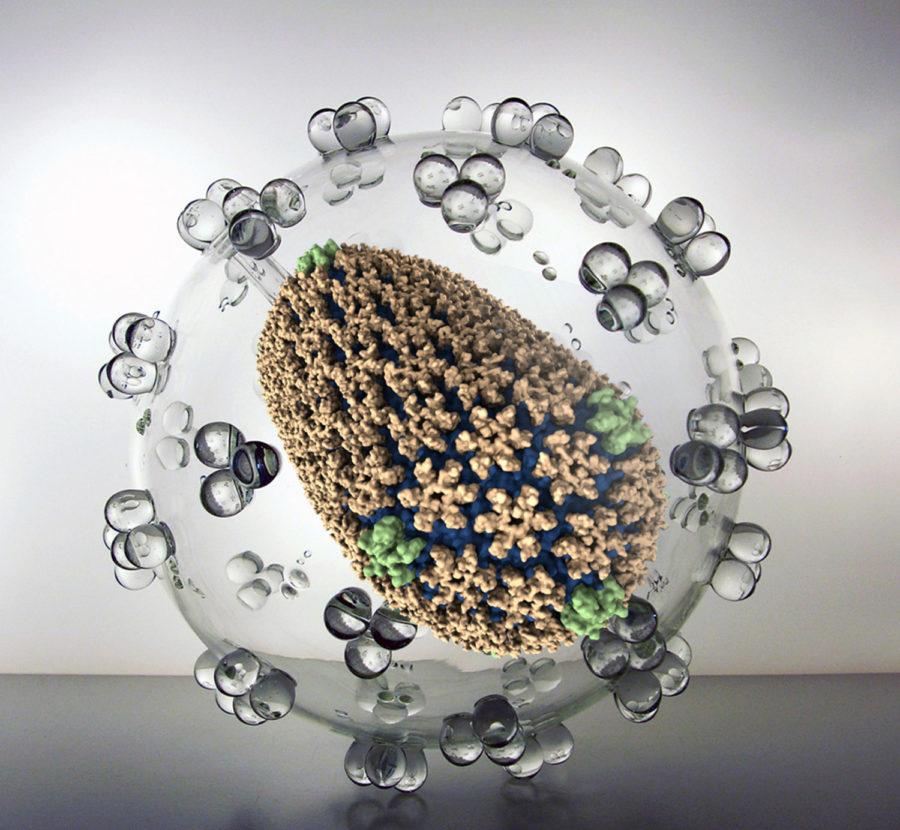University researchers develop first atomic image of HIV virus interactions in cell
Mar 30, 2016
Last updated on Nov. 6, 2016 at 05:34 p.m.
A team of University researchers have developed a clear atomic image of how the HIV virus interacts inside human cells.
Essentially, the researchers’ study looks into the interactions of the HIV virus on an atomic scale.
University physics professor Klaus Schulten led this investigation along with postdoctoral researcher Juan Perilla. They also worked with colleagues at the University of Pittsburgh.
“We study when the virus is inside the cell, how it makes it through the cell without being attacked by the cell and how it is helped by the cell to find the nucleus,” Schulten said. “This is where the Cyclophilin A helps,” Schulten said.
Get The Daily Illini in your inbox!
Cyclophilin A (CypA), a protein found in many bodily tissues, has been known to interact with the virus for almost two decades. However, its exact interaction with HIV on an atomic level was previously unknown.
“CypA is abundant in human cells. It is used for multiple cellular functions and one of these cell functions will trigger immune responses against viruses,” Perilla said. “HIV has evolved to use CypA against the cell. Instead of protecting the cell against HIV, it helps HIV to infect the cell.”
When the virus is inside the cell, it binds with a certain concentration of CypA and is able to pass through to the nucleus. This allows it to destroy the cell from within and move on to other cells, spreading the virus.
“We knew that HIV uses CypA to infect cells, what we didn’t know was how it happens,” Perilla said. “What we discovered is that there is a second interaction site.”
Researchers were able to come to these conclusions based on models generated by Blue Waters, a supercomputer at the National Center for Supercomputing Applications at the University. Through imputing data, it simulated millions of atomic interactions and compiled a real-time interaction between the HIV capsid and CypA.
The next step in their research is to study the effects of certain drugs on an atomic level, he said. One drug they are looking into is PF74. It incapacitates the virus but it also kills the patient.
“When you know the details of this virus, you can attack it with drugs,” Schulten said. “In order to know what they do, you need to know the detail.”
Moving forward, this research can be applied to other viruses such as influenza and Ebola to understand their interactions at an atomic level, he said.
“We now have this really detailed structure and we have something to show for our work because we understand how this virus makes it through the cell in a very specific way,” Schulten said.
The Beckman Institute for Advanced Science and Technology sponsored the study which was published in Nature Communications.






